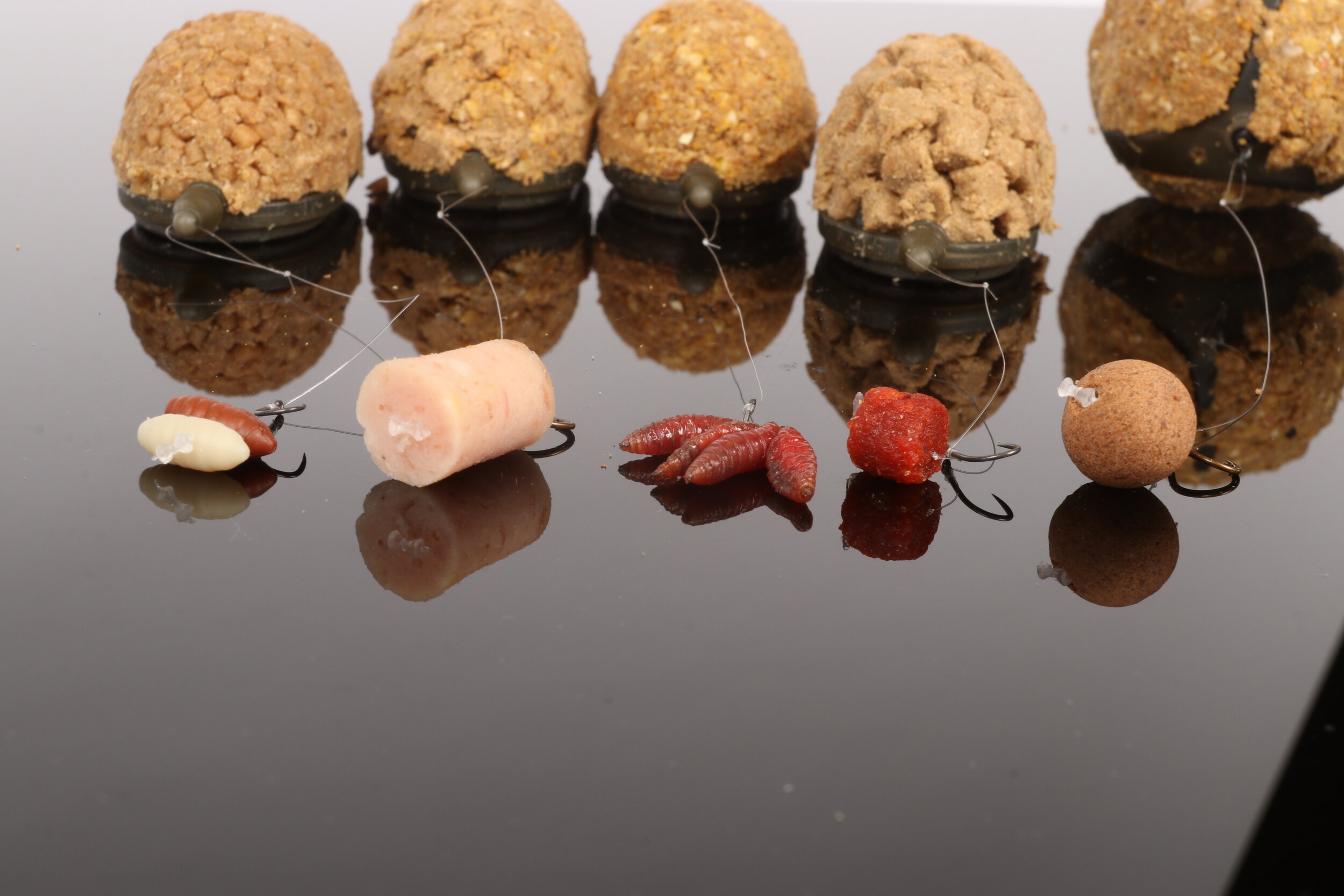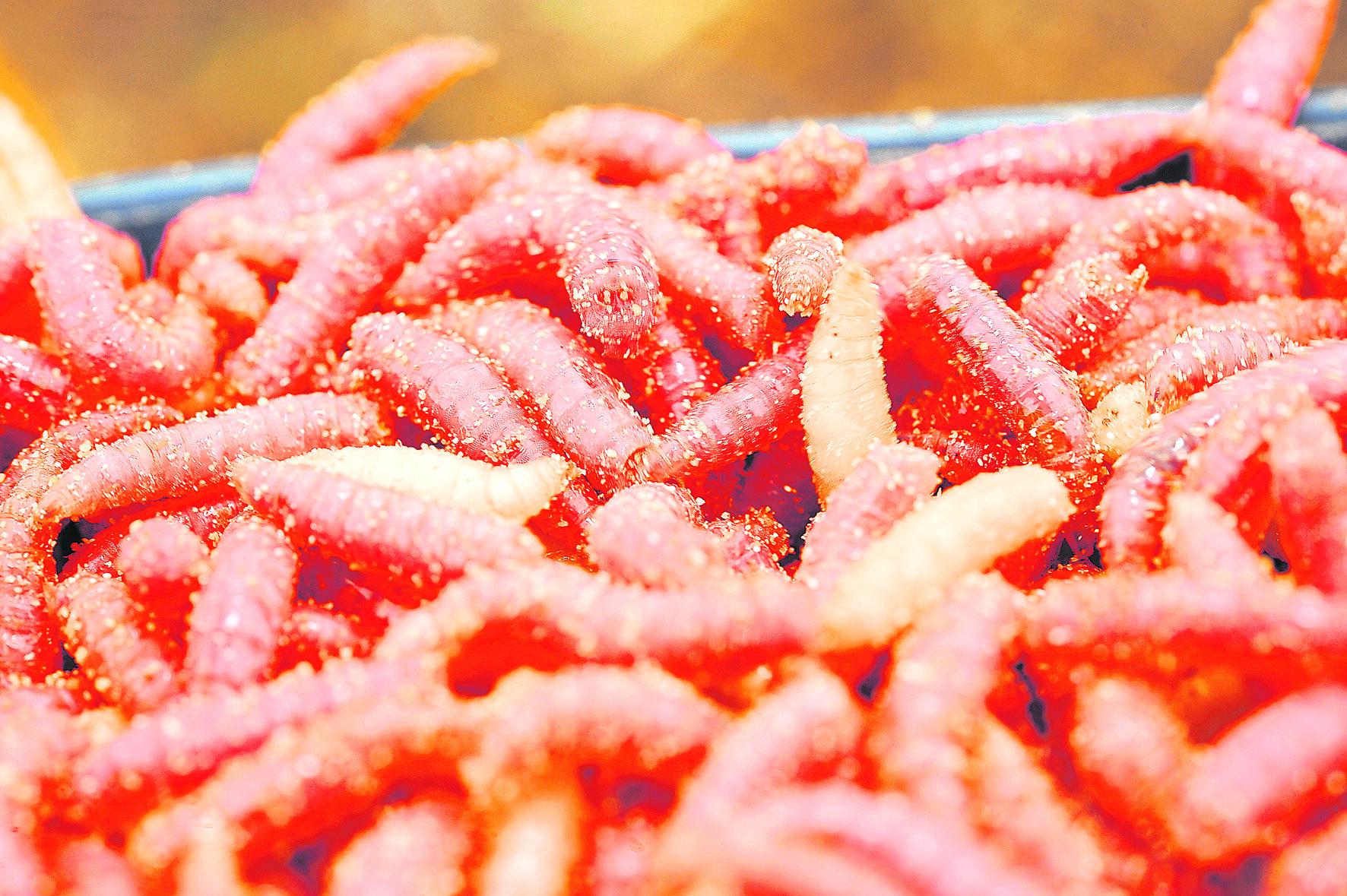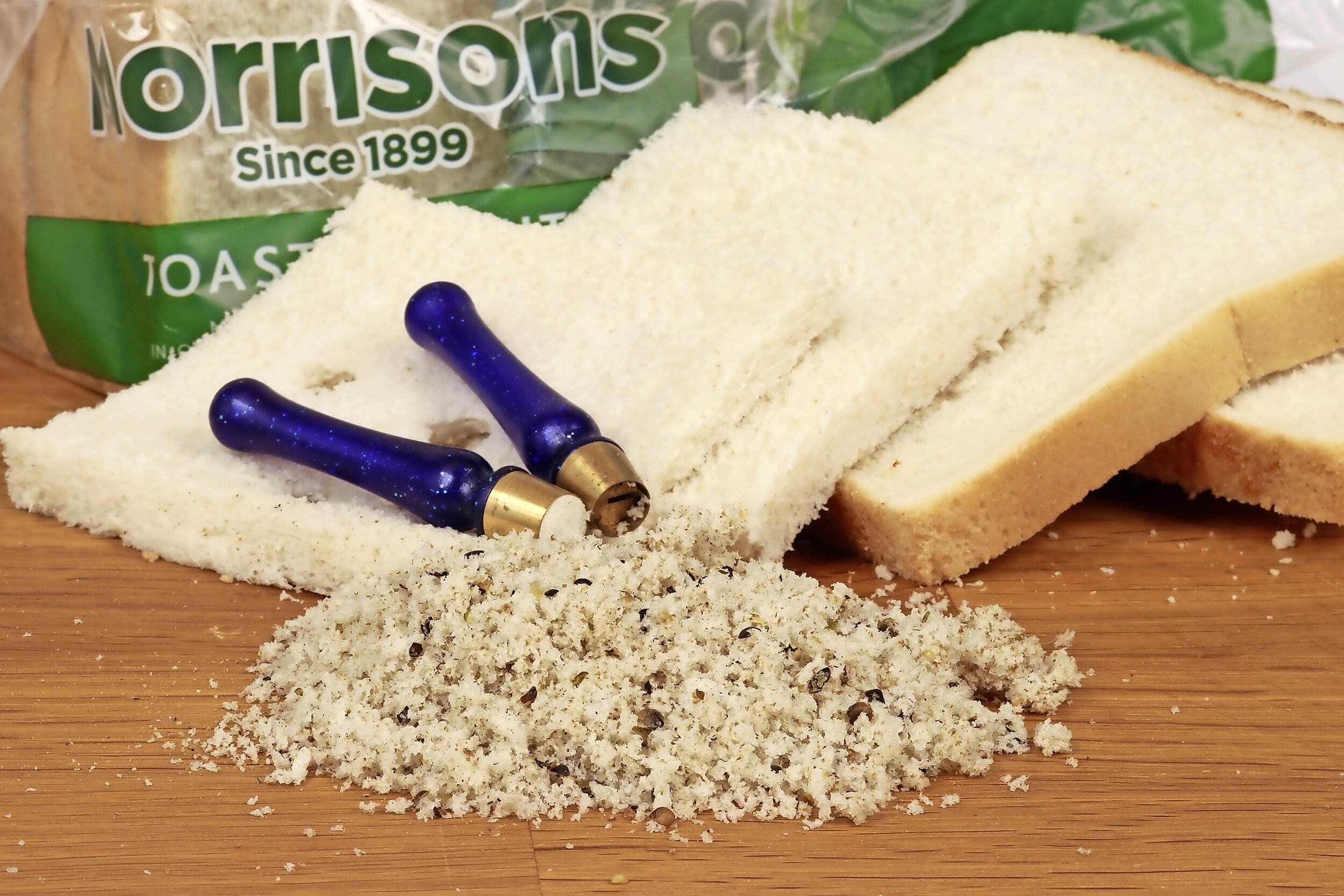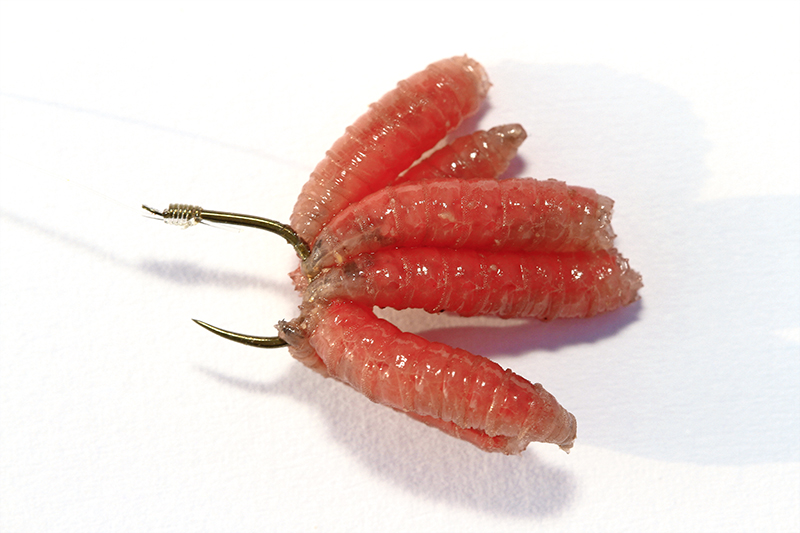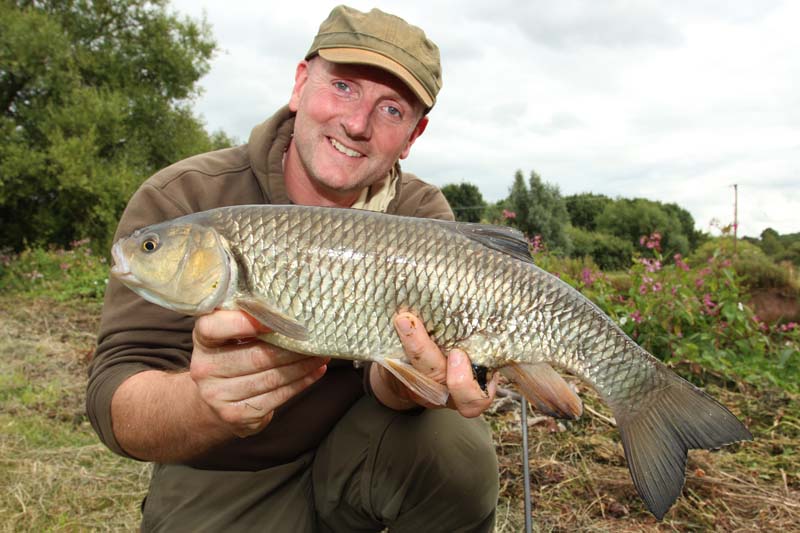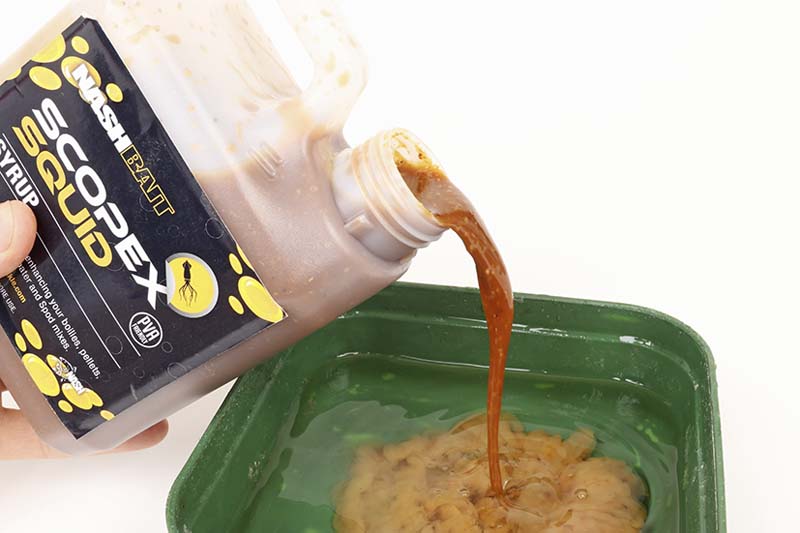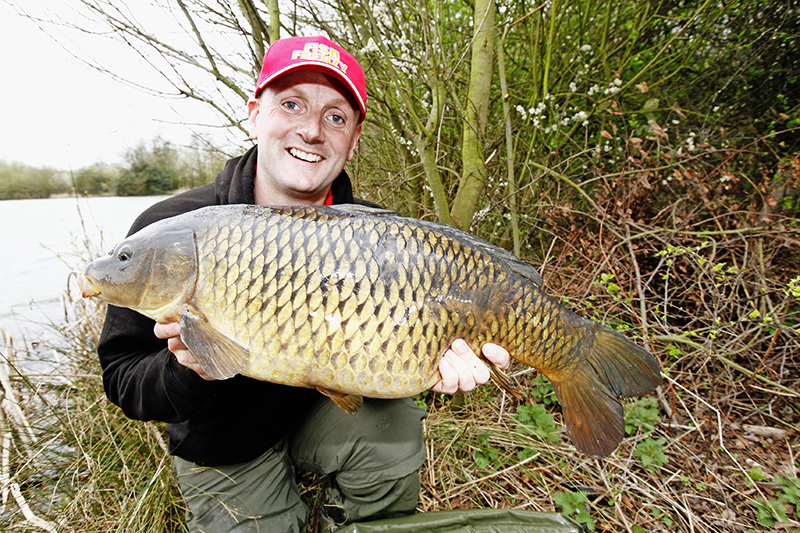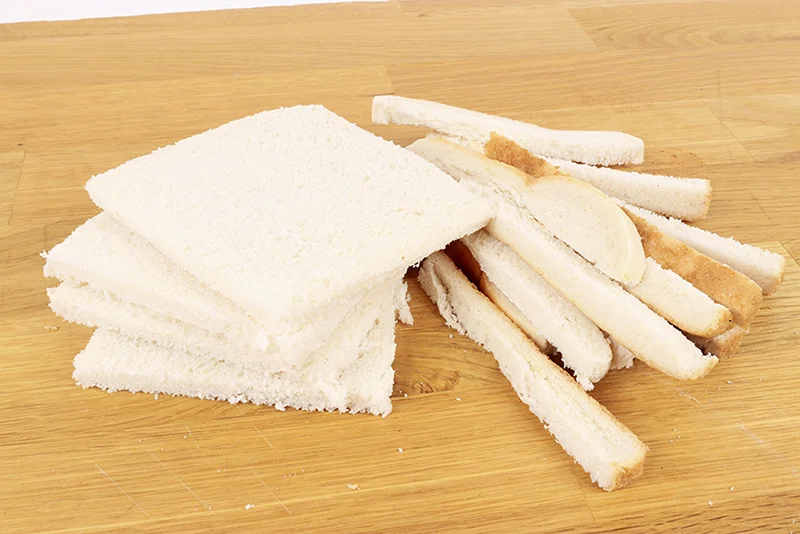Five baits that you must use when coarse fishing!
Check out bait expert Dr Paul Garner's best choices for bait this year...
Choosing just five baiting tactics that you must use for when you go fishing has been a surprisingly difficult task for me. It’s a case of being spoilt for choice – after all, there are just so many ways to catch fish and almost as many baits to use.
In the end my list came down to baits that will not only catch you more fish, but ones that will help you bag a new personal best and experience some high-adrenaline fishing. You’ll notice that soft plastic lures for perch fishing appear on the list – although these are artificial baits, they are fished very much like naturals, and are just as effective.
Here are my top five baits to use – you won’t be disappointed!
1) Catch carp on surface baits
There is no better way of catching carp than off the top, especially if you can get them feeding close in. That heart-in-mouth moment when a big pair of lips engulfs your hookbait and the line tightens is a million times more exciting than sitting behind a set of buzzers.
Yet still so few people have caught on to the adrenaline rush – in the main, I guess, because it can be a frustrating tactic as the carp refuse point-blank to eat your hookbait. Take my advice and find a well-stocked venue to begin your surface fishing quest. Take some 11mm floating pellets and catapult these upwind of any carp you spot sunning themselves on the surface. Now wait.
Don’t even think about making that first cast until the carp are charging from one bait to the next in a race to beat their shoal-mates to the free grub. Only then is it time to flick a freelined pellet or marshmallow out – and success will be virtually guaranteed.
2) Target perch on lures
Numbers of big perch are booming at the moment, although history tells us that this won’t necessarily always be the case – back in the 1960s our stocks were almost wiped out my a mystery disease, and that could happen again without warning.
All the more reason, then, to make sure you bag yourself a specimen stripey this year. While the humble lobworm or a small livebait will account for a lot of chunky perch, soft plastic lures take some beating if you want to net a real biggie.
Drop shotting is the method of the moment – but it is not the only lure fishing technique to use. With the weight anchoring the small soft plastic grub tight to the bottom, drop shotting is great on days when the perch are close to the bottom. This is especially the case during cold weather.
Much of the time, though, perch can be found in midwater and a drop shot is likely to present a lure too deep. Switching to a bright green 2ins-3ins long paddle tail lure on a tiny 1/4oz jig head is then much more effective, as it can be retrieved at any depth. Simply count the lure down as it sinks, start close to the bottom and then with each cast reduce the time before you start the retrieve to fish at different depths.
3) Make your own gel hookbaits
With a plethora of brilliant baits available straight from your local tackle shop, you may wonder why I still insist on making many of my own baits. It has to be said that I enjoy ‘messing about with bait’, but I genuinely believe that making your own gives you the freedom to come up with something a bit different from the norm.
I think my home-made gel baits definitely give me an edge. I often use them with the Method feeder, but they are just as useful for other tactics. Using gelatine or Veg-e-gel powder, available from the cooking section of supermarkets, I can set any liquid or powdered additives into a firm bait that literally melts slowly in water. Best of all, I can make a batch of bait in just five minutes. This is very different to other Method hookbaits, and has caught me fish on days when other baits have failed to work and gives me total control of the bait I use.
4) Spray pellets for chub
On my West Midlands rivers chub numbers are booming, with shoals of hungry two to five-pounders providing fantastic sport on float and feeder. These fish have grown up seeing pellets nine months of the year, thanks to barbel anglers. So pellets are obvious baits to target these chunky chevins.
A small Kamasan Blackcap feeder loaded with 3mm pellets works well, but not only more effective, but much more fun is to fish a pellet waggler tight against far-bank overhangs and spray 6mm pellets.
Expect bold bites as the chub compete for the free food. For best results keep a constant flow of pellets going in – the longer you feed, the more the chub will lose their natural wariness and the more fish you will put in the net.
5) Use boilies for specimen barbel
If a big barbel is at the top of your bucket-list for 2017, take my advice and use boilies. You may not catch as many, but my trials have revealed a massive increase in the average size of the fish I have caught on big baits.
Don’t be afraid to go-large either – 18mm or 20mm baits, fished either singly or doubled-up, make a decent mouthful for a double-figure barbel. Expect to catch few male fish under 7lb, but the large females will be suckers for a decent meal.
Most barbel tend to be caught on savoury-flavoured boilies, simply because that is what most people use, but dare to be different. Sure, you will catch on meat or fish-flavoured baits, but curry spices work great, especially in colder conditions, and I have found sweet flavours to be equally effective. Chances are no one else will be using them.
There is no point in feeding hemp or pellets if you are fishing with large boilies. Stick to just large baits, introducing a handful of bait on a PVA stringer and catapulting the odd boilie upstream to top-up the swim.
Steve Ringer's top 10 baits to use when fishing commercials.
Are you looking for for an edge when it comes to being on a commercial fishery? Then follow match ace Steve Ringer's top 10 baits that he uses when fishing for carp on a commercial as these tips will give you the advantage that you need.
1) Margins – big baits means more bites
When fishing in the edge, one of the hardest things is getting a carp to pick up your hookbait, especially when a lot of them are feeding. I would go as far as to say there is nothing more frustrating than being able to see carp in the edge and then not be able to catch them. This is where a big ‘target bait’ such as 10-12 dead red maggots really comes into its own.
If you think about it there are going to be lots of maggots on the bottom so if I fish just two or three on the hook it’s going to take a while for a carp to find them. Fish a bunch, however, and bites can be instant! That’s how much of a difference it can make.
2) Blow up your pellets
A few years back I was doing a lot of straight lead and pellet fishing but always felt I was missing an edge over other anglers who were fishing the same tactic. Then one day when I was packing up I noticed a few pellets had fallen under my seatbox. What struck me was the size of the pellets – they had taken on water and were almost twice the size.
This got me thinking as the same thing had to be happening in the water once the pellets had been on the bottom a while. I therefore decided to pump some hard 8mm pellets and leave them in water so that they ‘blew up’ into massive, soft pellets.
Once I got the process of prepping the pellets rightthe results were staggering and I was getting more bites than ever before on my ‘new’ blown pellets! I had found the edge I had been looking for and ever since that day when lead and pellet fishing I always have a few ‘blown’ pellets with me.
3) Hard pellets - noise is the key
When the fishing is hard and there isn’t a lot happening I am big believer in trying to draw a few fish into the swim and the best way to do so is to make a noise with hard pellets. I pick up my catapult and ping just 3-4 pellets on top of the float every 20 seconds.
The reason this works is that carp home in on the noise of the pellets hitting the water but at the same time I’m not putting lots of bait on the bottom and risking killing the swim. Size-wise this tactic works best with either 6mm or 8mm pellets because anything smaller doesn’t make enough noise to help pull a fish or two into the swim.
4) Coloured water equals red meat
I love fishing meat but it loses its effectiveness when the water is extremely coloured. When this is the case I will take a handful of my 6mm cubes and dye them red. The reason being when the water is very coloured red offers a strong silhouette and gives the carp a bait they can really home in on.
I was always sceptical about red meat in the past but I’ve had good results using it too many times in coloured water conditions for it to be coincidence. I use Ringers Red Liquid to dye my cubes and will only dye my hookbait meat and not the cubes used for feeding.
5) Foul-hooking? Hemp is the answer
I’m often asked how to prevent foul-hooking carp when fishing meat close in?
My answer is to use hemp. But, and it’s a big but, it has to be used in the right way. If you feed it little and often along with the meat then there is a danger the carp can get preoccupied on it and you won’t be able to catch them.
It’s much better to use hemp purely as settling bait. So at the start I will pot in two thirds of a large 250ml Drennan pot of just hemp to form a bed. Then if I start to catch a few and then start to suffer from foul hooking, I will simply introduce another big pot of hemp to settle them back down again.
6) Feed heavy close in to get out of jail
Every now and again in a match you need a get- out-of-jail card and, while most people use the margins for this, I prefer to fish short on a top kit straight in front of me. I mix hemp, corn and meat and simply lash it in to create the impression of someone packing up and throwing all their bait in.
I normally kick the swim off with three big handfuls of bait and go straight in over the top because quite often I will get a quick response from a fish within seconds. From that point on I will keep lashing the bait.It’s an approach that doesn’t always work but it has paid off on many occasions for it to be my ‘go to’ line when things aren’t going to plan.
7) Pack in the particles for bream
The secret to building a big weight of bream is particles particles – casters, pellets, worms etc. I pile in the particles in the first hour to put a bed of bait on the bottom. To do thisuse a bigger feeder and cast more often. Then when the bream turn up, perhaps 90 minutes in, I have a lot more bait on the bottom to hold the bream for longer.
8) Corn – two grains are better than one
Sweetcorn is a fantastic bait all year round but it’s particularly effective at this time of year. The interesting part about corn is that when it comes to fishing it on the hook then I always tend to find that two grains are without doubt better than one.
Loads of times I have caught on corn and alternated between single and double on the hook only to find two grains constantly produced quicker bites and bigger fish. There are two possible reasons for this, firstly the bigger bait stands out more over the loose offerings so the carp spot it that bit quicker, or it could be that everyone tends to fish a single grain of corn so two grains gets treated with less suspicion.
9) Stand out or blend in?
When fishing the Method or Hybrid feeder there are loads of different hookbaits you can use but I like to simplify things by dividing them into two camps, blend-in and stand-out. Blend-in baits are those such as hard pellets that match the pellets on the feeder. When the fishing is hard this type of bait takes some beating.
The reason for this is that when the fishing is hard there aren’t many fish in the swim so those that are there can afford to be picky about what they pick up. Hence a blend-in bait works well as it can trick even the wariest of carp.
If, however, there are loads of fish in the swim then stand-out baits such as mini fluoro boilies or bread really come into their own. These work because they are highly visible and give the carp something they can really home in on.
10) Give your meat a double cut
A couple of years back I spent a lot of time at Tunnel Barn Farm fishing meat into the shallow water across to far banks and islands. The problem was I struggled to hold the fish in the swim for long periods when feeding 6mm cubes.
What I needed, of course, was to create a cloud to firstly draw the fish in and then hold them in the swim once they arrived. To achieve this I decided to create a meaty mush by passing around a third of my 6mm meat cubes back through the cutter again, giving myself a feed made up of different sizes which almost exploded on the surface of the water.
This was added to 8-10 6mm cubes in my pot so when it was fed the cloudy mush pulled the fish into the swim and once they arrived they followed the 6mm cubes down to the bottom so I could catch them!
How to give your maggots and pellets the edge they need!
Maggots and pellets are without doubt the top springtime baits on commercials, but could the deadly duo be made even more effective? You bet!
Gallons of each are piled into our favourite fisheries and while bites are almost assured when using them both, your catch returns could be given an even bigger boost by making a few simple yet underrated tweaks. Maver-backed matchman Jake Robinson has been almost unbeatable in recent months, scoring numerous victories in competitions that have been contested by some of the country’s biggest stars.
Rather than apply tactics straight from the textbook, the Staffordshire-based rod has dared to be different and that bold approach has served him well time and time again. “Flavourings are often dismissed but I’ve worked on four different combinations that will work wonders at this time of year when big nets of carp, F1s and silverfish are in mind.”
“By giving my maggots and pellets a colourful and flavoursome edge, I’ve been able to keep the success coming, even when I’ve found myself on pegs described as were no-hopers.”
1) Luminous maggots
Red maggots are the number one choice of thousands of anglers, but could you make them even redder and increase their pulling power? “Red maggots straight out on the bait box aren’t particularly vibrant and I’ve found that adding a bright red liquid to them has several benefits.”
“First of all it makes your hookbait and loosefeed stand out a mile in clear water and the cloud also lingers to draw in fish that would be unaware of the feast waiting for them.” A whole bottle of Bag’em Matchbaits Red Aggressor liquid is added to two pints of maggots the night before a session, swilled around and then left to rest overnight. By the morning your bait will stand out a mile!
2) Pineapple pellets
There is an obsession with fishmeal products on commercials but going the other way and using a very sweet flavouring or additive can often score heavily. “Fish stocks have become accustomed to fishmeal and I think doing something different with your pellets helps attract the wary and often bigger fish into feeding confidently.”
Rather than dampen your micro or 4mm pellets with water, slowly add Pure Pineapple liquid and mix it in. Once all the bait is thoroughly soaked, place the bait lid on, leave to settle for 15 minutes and you’ll then have softened pellets with a difference.
3) Blood red expanders
There will be some days when no matter what you try, you just can’t convince the fish to feed. During those sessions, it is key to make sure that the fish notice your hookbait quickly and don’t fill themselves on loosefeed. “I often feed normal micro pellets and place a vibrant and unmissable target bait on top of that. A blood red expander is much better than anything else in my experience.”
Pump your expander pellets as you normally would and then sprinkle a teaspoon of Super Sweet Meat and Maggot dye over the top. Place the lid on the tub, shake for 30 seconds and you’ll then have blood red expanders that no commercial fish will be able to resist.
4) Yellow micros
When you are fishing in shallow water up against an island or the far bank of a snake lake, it can pay to introduce a colourful cloud. Introduce a couple of spoonfuls of yellow Super Sweet Meat and Maggot dye to your loosefeed. Don’t mix it in too heavily, keeping the powder visible.
“Each time you feed, a small amount of powder will be introduced neat and that creates a cloud that lingers in the swim. Red and green are common colours on commercials but yellow is underrated and as fish don’t see it that often is the reason it is so effective.”
Five ways to prepare your pepperami!
Are you struggling on a water that is heavily fished? Then this bait may be for you seeing as big carp can become wary of standard boilies. So why not try out this unusual bait that may make it easier and give you that killer edge on heavily fished venues.
So in order to keep the bites coming, you need to be one step ahead and offer the fish something a little different. In early spring, one of the best ‘alternative’ hookbaits is Peperami. Peperami is nothing particularly new as a bait, having first found a place in the carper’s bait armoury around a decade ago. Yet to this day its use remains sporadic at best, with most anglers reaching for plastic corn as their first port of call as a ‘change bait’ from boilies.
Such anglers could be missing a trick, because as well as being a durable, cheap and highly attractive hookbait, Peperami is a also a highly adaptable offering that can be used in all manner of different ways. Here we highlight five ‘rami’ tricks for you to try.
1) Fill a pva bag with chops
A small mesh bag containing small chops of Peperami and a pinch of low-oil pellets is a fabulous winter loosefeed. Don’t overdo it though, or you’ll satisfy the fish’s appetite before they get to your hookbait!
2) Grate for extra appeal
For a hookbait full of attractive scent yet low on food value, grate the rami finely, add a few grains of corn and seal a little parcel of the mix in a fine stocking material, tied off with some dental floss and then hair-rigged.
3) Pair rami with a spicy groundbait
A cylinder of Peperami fished in conjunction with a red groundbait laced with chilli powder is an excellent tactic. The highly-attractive mix will draw carp into your swim, where the only sizeable item of food they’ll find is the hookbait.
4) Make a balanced and ‘skinned’ hookbait
To give the fish something totally different to think about, try skinning or coring a couple of rami sections with a meat punch and hair rigging them laterally, with a small slice of cork on top to help critically balance the bait. A deadly set-up!
5) Make a peperami pop-up
To take the buoyancy theme one step further, remove the central cylinder of a rami section with a meat punch and insert a cork plug. This will pop it up off the bottom, right in the carp’s line of sight. Balance the bait with a shot
Paul Garners easy 10 minute rolled bread carp hookbait!
Bread is one of the best winter baits for carp. Its complex structure of means that it is light in water, making it easy for carp to pick up, and big baits can be used as it has very little substance. Bread lends itself to a whole host of tactics, so why not give it a go?
Follow these six simple and easy steps to be able to create the perfect rolled bread hookbait.
Step 1
Cut the crusts off several slices of white bread. It’s worth buying a good quality loaf for hookbaits.
Step 2
Sprinkle a pinch of krill powder or similar powdered additive on to the bread slices.
Step 3
Gently roll the slices of bread with a rolling pin or bottle. The aim is to reduce the thickness by half.
Step 4
Try rolling two or three slices together as an alternative to a single slice.
Step 5
Punch out the hookbaits. It is worth experimenting with different sizes of punch.
Step 6
Hair-rig the punched bread. A Quick Stop is the easiest, most secure way to keep it in place.
Quick tip
If the bites dry up on bread, try adding a couple of maggots to the hook. ‘Bread with legs’ is a classic cocktail bait at any time of the year, and one that can see you catching a wider range of species than bread alone.
Steve Ringer's favourite corn hookbaits for carp!
I use both corn and wafters for hookbaits, and will change my hook based upon which bait I’m using. When fishing corn on the hair I’ll use a size 18 Super MWG.
If I change hookbaits from corn to a yellow wafter I will switch to a size 14 QM1 hook and a 0.17mm hooklength – still 75cm long, of course.
In terms of hookbait choice, contrary to popular belief corn gives you quite a few! To simplify things, though, there are three I like to concentrate on...
1) Corn stack
This involves hair-rigging multiple grains through the narrowest part. The advantage of fishing a stack is that you are creating a big, stand-out bait and offering the carp something a little different to what they are used to.
2) Dumbell wafter
A 10mm yellow dumbell wafter resembles a grain of corn and blends in well with the loose offerings. It has two key benefits over the corn – being so light it sinks very slowly through the water, increasing the chances of a carp seeing it and following it down. Then, once on the bottom, it becomes a very light hookbait that is easily sucked up by a feeding fish.
3) Corn string
This is a real favourite of mine. The ‘string’ is a number of grains hair-rigged through the long part of the grain, and gives the fish an easy bait to spot. It gives the appearance of multiple grains lying next to each other on the bottom, and fish can pick up a lot of feed in one easy go.
Paul Garner's 10 minute big carp grub mix!
You can use maggots on their own, but on well-stocked lakes where the carp are used to finding plenty of bait I will bulk out my feed a little.
The idea is to get the carp grubbing around and homing in on the maggot hookbait. This mix is ideal for use in PVA bags and for spodding out.
Follow these easy steps below to have your big carp mix ready in minutes.








